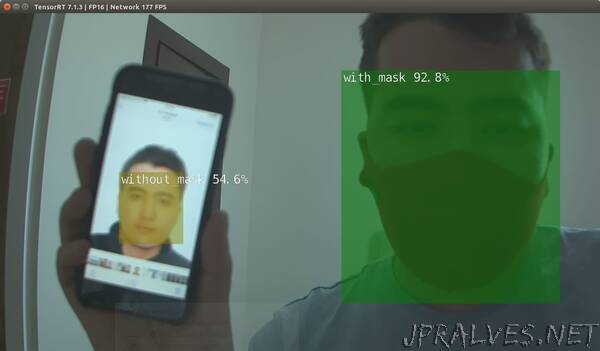
“In this project, we’ll learn how to easily train a face mask detector and deploy it on a NVIDIA Jetson board using PyTorch and TensorRT.
Story
Due to COVID-19 pandemic, at present time, there are various facial recognition technology applied to people wearing masks. Detection of face masks is an extremely challenging task for the face detectors.
In this tutorial, I’m going to show you how to set up Face mask detection system using the machine learning framework PyTorch on the NVIDIA Jetson board with a help from TensorRT. We will start by performing face mask detection with images, videos and then advance to real-time face mask detection.
The first thing to do is to choose your object detection algorithm between Faster RCNN, SSD, FPN, YOLO and more. For this project, we want something fast since we will implement the model on a small machine such as NVIDIA Jetson board. So, the most appropriate algorithms are single shot methods such as YOLO or SSD. For this tutorial, I’ll use SSD-MobileNet, which is the fastest model available.
Because the Jetson boards is an embedded device, it is not nearly as powerful as a modern desktop or server built with a powerful graphics card. As a result, if you plan to train a deep neural network (or other large model) from scratch, I recommend doing so from a laptop, desktop, or server. Generally, desktop PCs or server-level graphics cards (such as Nvidia 3080Ti, etc.) are very expensive, not suitable for edge computing needs, and are too bulky. Therefore, here we are going to use Transfer leaning approach. Transfer learning is the task of using a pre-trained model and applying it to a new task, i.e. transferring the knowledge learned from one task to another.”
